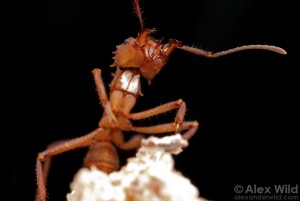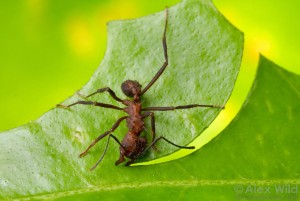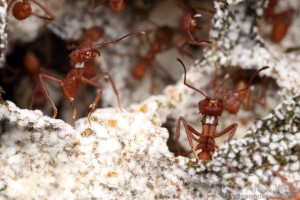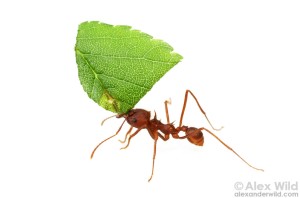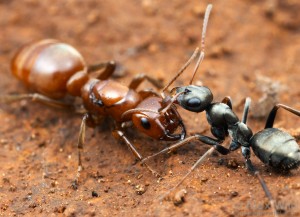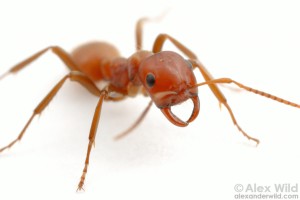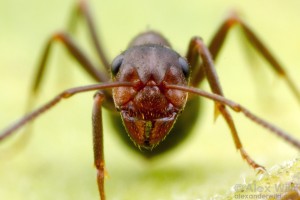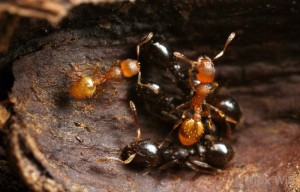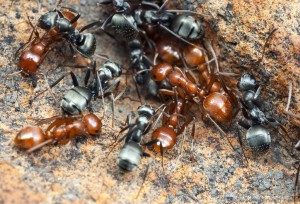Leaf-cutter ants work incredibly hard every day. They climb trees, after which they cut, transport and process leaves in order to feed them to their fungus. The ants divide these tasks in order to increase efficiency. Strong, big workers are good for cutting, while smaller workers are better for processing the leaves in the colony.

Leaf-cutter ant workers transporting cut leaves back to their colony. Photo by Alex Wild
How do the ants decide on who has to cut, and who has to transport these heavy leaves back to the colony?
To answer this question, we need to look at the mandibles (jaws) and teeth of the workers. Leaves take a lot of effort to cut, and doing so wears down teeth. Researchers from the University of Oregon found that worn teeth are much worse at cutting leaves. Worn workers have to spend much more time and energy to cut leaves, which would greatly reduce the efficiency of the colony. The ants solve this problem by letting young, strong workers cut the leaves, and older ‘worn’ workers carry them back home!

Leaf-cutter ant workers’ teeth can wear down from cutting leaves. Photo by Alex Wild.
Source: Schofield et al. (2011). Leaf-cutter ants with worn mandibles cut half as fast, spend twice the energy, and tend to carry instead of cut. Behavioral Ecology and Sociobiology 65(5) 969-982

